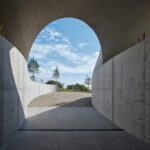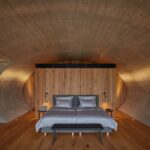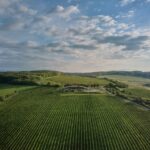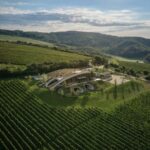
A Tribute to Tradition
Situated in Kurdějov, Czech Republic, the Gurdau Winery, designed by architect Ales Fiala, pays homage to the region’s rich wine-growing heritage. Founded in 2012 amidst picturesque vineyards, the winery draws inspiration from the historic village, historically renowned for its wine production.
Harmonizing with Nature
The winery’s design seamlessly integrates with the surrounding landscape, resembling a gentle wave amidst the hills. A curved, extensive green roof blends the building with nature, while 150 shrubs and trees adorn its periphery. This organic approach not only enhances the aesthetic but also contributes to the ecosystem’s well-being.

Organic Architecture
Crafted from reinforced concrete, glass, and wood, the two-story structure houses wine production facilities, tasting areas, and guest apartments. Its design ethos revolves around beauty, comfort, and sustainability, blending modernity with timeless elegance.
Embracing the Outdoors
Large windows, expansive terraces, and a pitched roof invite nature into the building, offering panoramic views of the surrounding vineyards. The terraces and green roof hill provide ideal spots to savor the scenery while enjoying a glass of wine.
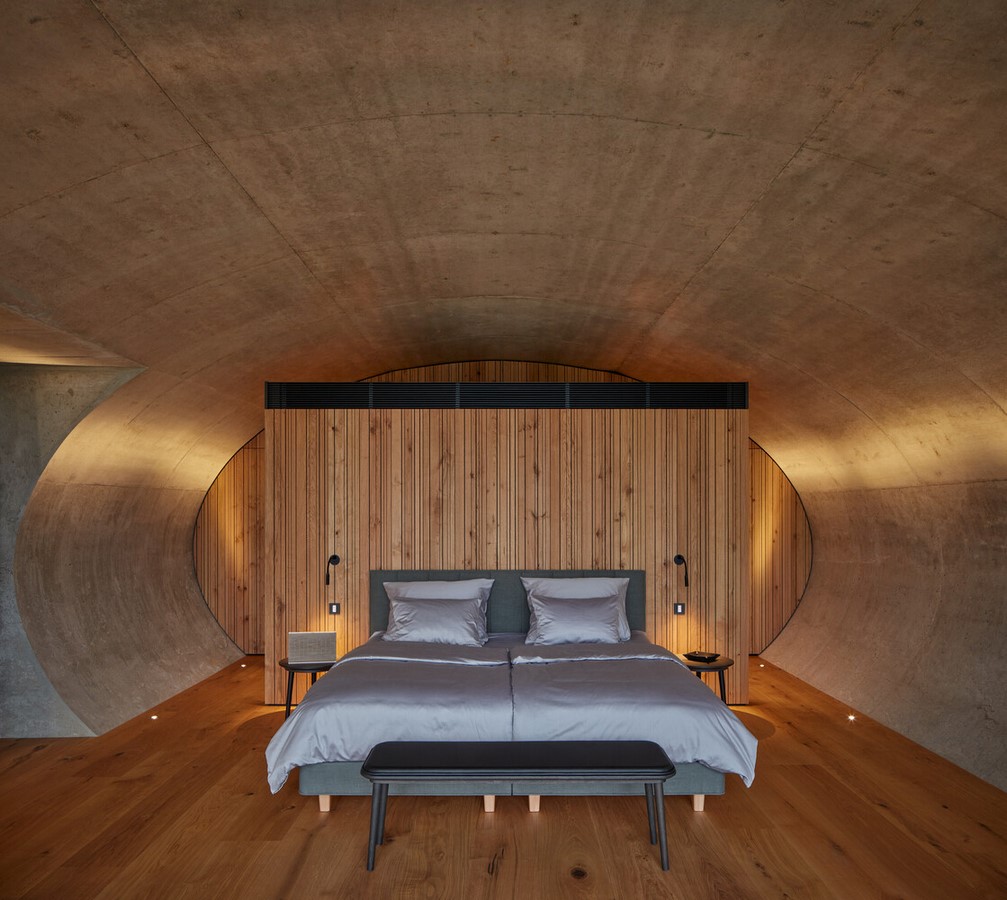
Cultivating Sustainability
Gurdau Winery embodies sustainability at its core. Its green roof minimizes visual impact, while strategically planted vegetation promotes a conducive microclimate. Passive energy utilization, rainwater harvesting, and efficient heating methods underscore its commitment to eco-conscious practices.
A Vision for the Future
The winery’s ethos extends beyond viticulture, aiming to foster a vibrant wine-tourist culture in the Czech Republic. By offering an immersive experience that celebrates the interplay between man, wine, and landscape, Gurdau Winery seeks to establish a new tradition of refined encounters and connections.
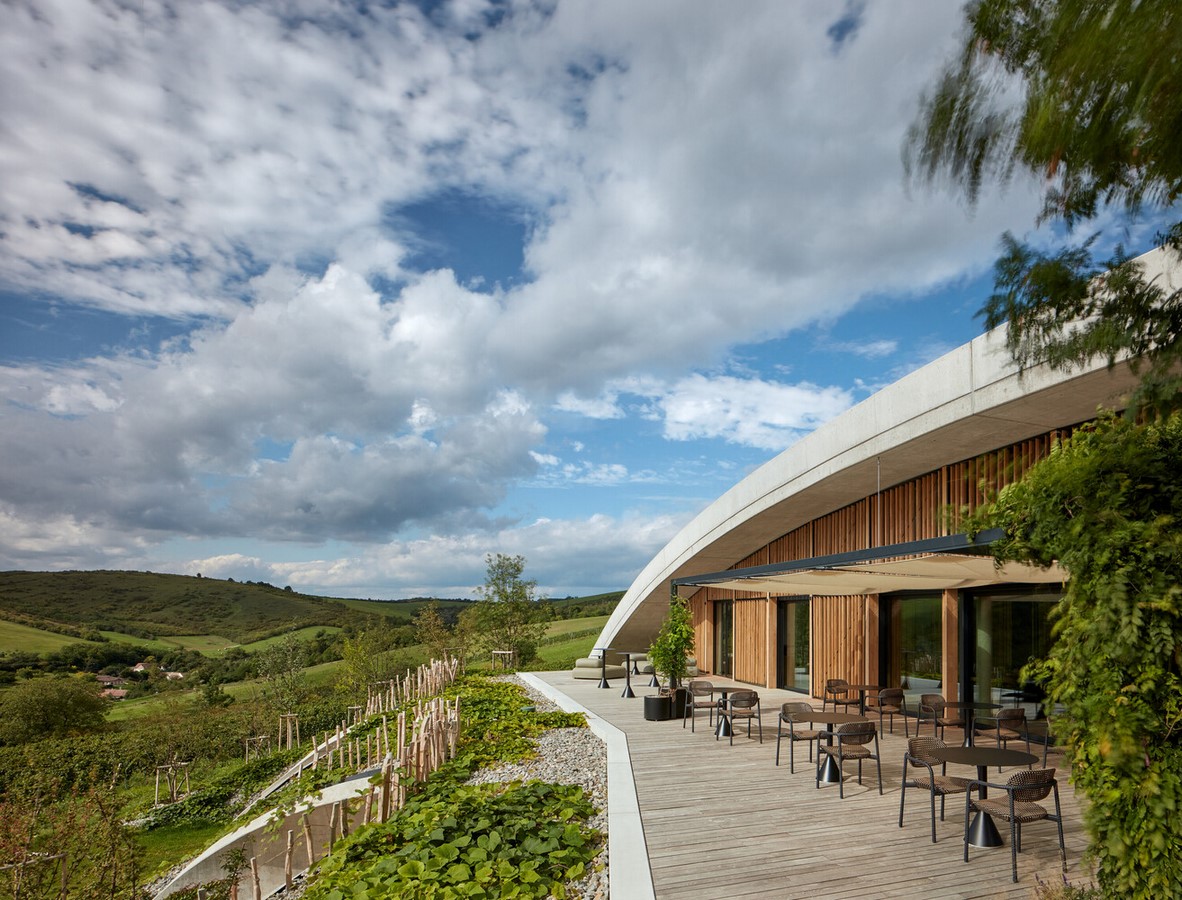
Conclusion
Gurdau Winery stands as a testament to architectural ingenuity and environmental stewardship. With its fusion of sustainability and green design, it not only elevates the wine-tourist experience but also sets a precedent for responsible development in the wine industry. As visitors indulge in its tranquil ambiance and scenic vistas, they become part of a legacy that honors tradition while embracing the future.








